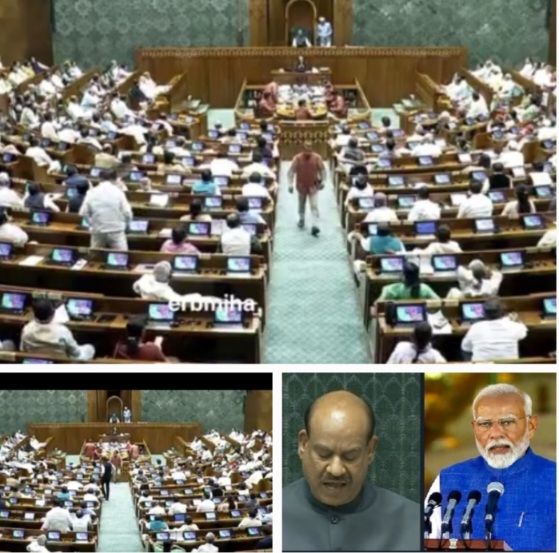Parliament Clears Historic Waqf Amendment Bill, 2025: Spotlight on Reforms, Protests, and Legal Crossroads
NEW DELHI/SHIMLA:
In a landmark moment, both Houses of Parliament — Lok Sabha and Rajya Sabha — have passed the Waqf Amendment Bill, 2025, following intense debate and passionate interventions.
The BJP’s Dr. Sudhanshu Trivedi, Member of Parliament from Uttar Pradesh, delivered a fiery speech that captured the spotlight.
He not only outlined the Bill’s merits but also sought to differentiate between the broader Muslim community and what he termed as “aberrations” allegedly perpetuated by the Opposition.
Even as Parliament gave its nod, streets across several states have witnessed protests, with sections of the Muslim community — many aligned with the INDIA alliance — voicing strong dissent.
With the Bill now awaiting Presidential assent to become law, the discourse has deepened.
Supporters argue it strengthens transparency and accountability, while critics fear overreach into religious autonomy.
Legal experts anticipate potential challenges in courts, as stakeholders across the spectrum continue to debate its implications.
Understanding Waqf: A Historical and Legal Perspective
What is Waqf?
Waqf refers to the permanent dedication of movable or immovable property by a person for purposes recognised under Muslim law as pious, religious, or charitable.
These properties hold immense religious, social, and economic importance in India.
A Timeline of Waqf Legislation in India
1954: The First Waqf Act
Introduced to regulate and safeguard Waqf properties, establishing a legal structure for their administration.1995: The Waqf Act (Current Law)
Comprehensive overhaul for better management, dispute resolution through Waqf Tribunals, and establishment of Central and State Waqf Boards.2025: Waqf Amendment Bill (Proposed Law)
Aims to enhance transparency, accountability, prevent misuse, and align with global best practices for managing charitable endowments.
Scale of Waqf Properties in India: The Numbers
India reportedly has over 8 lakh (800,000) registered Waqf properties — making it one of the largest collections of Waqf properties in the world.
According to the Sachar Committee Report (2006) and follow-up data:
Waqf properties cover around 6 lakh acres of land across the country.
The estimated market value of Waqf properties is over Rs 1.2 lakh crore, although experts suggest it could be much higher due to prime urban locations.
As per the Central Waqf Council:
States with the largest Waqf landholdings include Uttar Pradesh, West Bengal, Karnataka, Maharashtra, and Telangana.
In Uttar Pradesh alone, there are more than 2 lakh Waqf properties.
Revenue Potential:
It is estimated that if managed efficiently, Waqf properties could generate annual revenues exceeding Rs 12,000 crore, yet current earnings are just a fraction of this potential due to mismanagement and encroachments.
Administrative Framework
Central Waqf Council (CWC):
Advisory role to the Government of India and State Boards, but no direct management authority.State Waqf Boards (SWBs):
Custodians of Waqf properties, responsible for their management and protection at the state level.Waqf Tribunals:
Exclusive judicial bodies for resolving disputes related to Waqf.
The Road Ahead: Protests, Legal Scrutiny, and Stakeholder Debate
The passage of the Waqf Amendment Bill is only the beginning. The coming weeks are expected to witness:
Fresh street protests, particularly in states with significant Waqf assets mainly fueledby the vested interest and opposition parties.
Possible petitions challenging the Bill’s provisions in the Supreme Court as AIMIM chiefAsaduddinOwaisihas already declared to move the SupremeCourtof India.
Broader debates on religious autonomy, secular governance, and property rights.
The government maintains that these reforms are essential for safeguarding Waqf properties from misuse and unlocking their potential for community development.
Critics, however, argue that the Bill will give fair playground for all strands of Muslim community in India.









